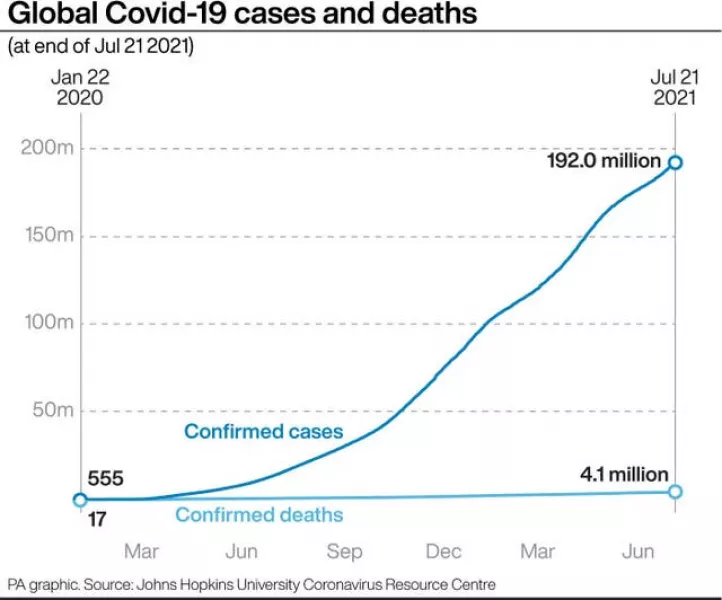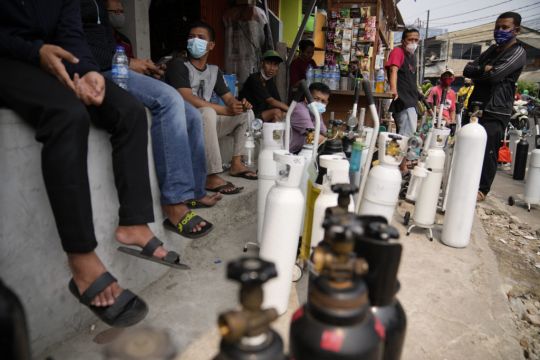Indonesia has converted nearly its entire oxygen production to medical use just to meet the demand from Covid-19 patients struggling to breathe.
Overflowing hospitals in Malaysia had to resort to treating patients on the floor.
And in Myanmar’s largest city, graveyard workers have been labouring day and night to keep up with the grim demand for new cremations and burials.
Images of bodies burning in open-air pyres during the peak of the pandemic in India horrified the world in May, but in the past two weeks the three south-east Asian nations have now all surpassed India’s peak per capita death rate as a new coronavirus wave, fuelled by the virulent Delta variant, tightens its grip on the region.
The deaths have followed record numbers of new cases being reported in countries across the region, which have left health care systems struggling to cope and governments scrambling to implement new restrictions to try to slow the spread.

Last month in the Malaysian state of Selangor, the centre of the country’s outbreak, corridors of the government hospital were crowded with patients on beds with no room left in the wards. In some other hospitals in Selangor, Malaysia’s richest and most populous state, there were no free beds at all and patients were reportedly treated on floors or on stretchers.
The government has since added more hospital beds and converted more wards for Covid-19 patients.
A variety of factors have contributed to the recent surge in the region, including people growing weary of the pandemic and letting precautions slip, low vaccination rates and the emergence of the Delta variant, which was first detected in India, said Abhishek Rimal, the Asia-Pacific emergency health coordinator for the Red Cross, who is based in Malaysia.
“With the measures that countries are taking, if people follow the basics of washing the hands, wearing the masks, keeping distance and getting vaccinated, we will be seeing a decline in cases in the next couple of weeks from now,” he said.
So far, however, Malaysia’s national lockdown measures have not brought down the daily rate of infections. The country of some 32 million saw daily cases rise above 10,000 on July 13 for the first time and they have stayed there since.
The vaccination rate remains low but has been picking up, with nearly 15% of the population now fully inoculated and the government hoping to have a majority vaccinated by year’s end.
With India’s massive population of nearly 1.4 billion people, its total number of Covid-19 fatalities remains higher than the countries in Southeast Asia. But India’s 7-day rolling average of COVID-19 deaths per million peaked at 3.04 in May, according to the online scientific publication Our World in Data, and continues to decline.
Indonesia, Myanmar, and Malaysia have been showing sharp increases since late June and their seven-day averages hit 4.37, 4.29 and 4.14 per million, respectively, on Wednesday.
Cambodia and Thailand have also seen strong increases in both coronavirus cases and deaths, but have thus far held the seven-day rate per million people to a lower 1.55 and 1.38, respectively.
Individual countries elsewhere have higher rates, but the increases are particularly alarming for a region that widely kept numbers low early in the pandemic.

With the Indian experience as a lesson, most countries have reacted relatively quickly with new restrictions to slow the virus, and to try to meet the needs of the burgeoning number of people hospitalized with severe illnesses, Mr Rimal said.
“People in this region are cautious, because they have seen it right in front of them — 400,000 cases a day in India — and they really don’t want it to repeat here,” he said in a telephone interview from Kuala Lumpur.
But those measures take time to achieve the desired effect, and right now countries are struggling to cope.
Indonesia, the world’s fourth most populous nation with some 270 million people, reported 1,449 deaths on Thursday, its deadliest day since the start of the pandemic.
Daily cases through about mid-June had been about 8,000, but then began to spike and peaked last week with more than 50,000 new infections each day.
Because Indonesia’s testing rate is low, the actual number of new cases is thought to be much higher.
As hospitals there began to run out of oxygen, the government stepped in and ordered manufacturers to shift most production from industrial purposes and dedicate 90% to medical oxygen, up from 25%.
Before the current crisis, the country needed 400 tons of oxygen for medical use per day; with the sharp rise in COVID-19 cases, daily use has increased fivefold to more than 2,000 tons, according to Deputy Health Minister Dante Saksono.







